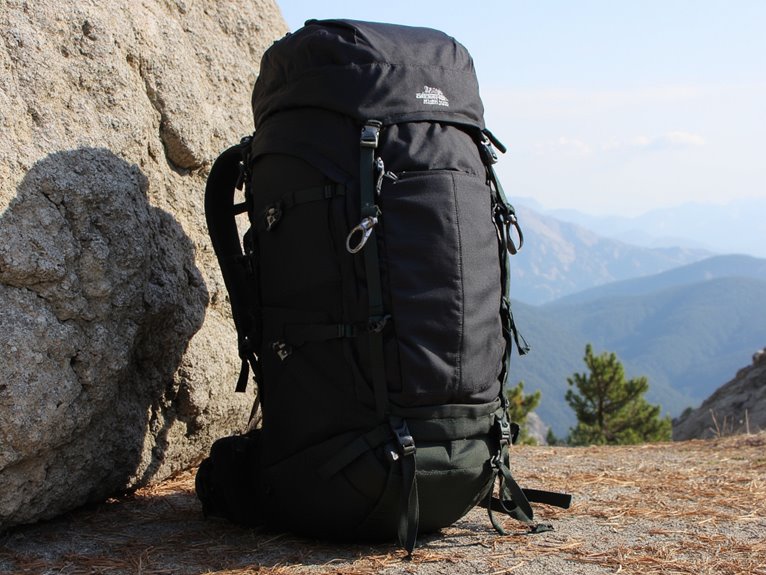How Much Bigger Should Mountaineering Boots Be?
When selecting mountaineering boots, a general rule of thumb is to look for a fit that is about a half to a full size larger than your regular shoe size to accommodate for thicker socks and potential foot swelling at high altitudes. This allows for a comfortable and secure fit, ensuring peak performance on the mountain. However, proper understanding of foot volume and shape, ankle and calf size, and sock thickness and layering impact is vital for a precise fit. By considering these factors, you can make an informed decision and uncover the secrets to a perfect fit that boosts your mountaineering experience.
We are supported by our audience. When you purchase through links on our site, we may earn an affiliate commission, at no extra cost for you. Learn more. Last update on 4th December 2025 / Images from Amazon Product Advertising API.
Understanding Foot Volume and Shape
Properly fitting mountaineering boots rely on a nuanced understanding of foot volume and shape, as a mismatch can lead to blisters, discomfort, and even compromised performance on the mountain.
Foot volume refers to the overall size of the foot, taking into account the length, width, and depth of the foot.
Foot shape, on the other hand, encompasses the unique contours and proportions of the foot, including the arch type, toe length, and heel-to-toe ratio.
A thorough understanding of these factors is vital in selecting boots that provide a comfortable and secure fit.
Considering Ankle and Calf Size
Beyond foot volume and shape, a successful boot fit also hinges on accommodating the unique dimensions of the ankle and calf. These areas can be notoriously difficult to fit, and even slight discrepancies can lead to discomfort, blisters, and compromised performance.
When considering ankle and calf size, keep the following factors in mind:
- Ankle circumference: Measure around the narrowest part of the ankle to verify the boot opening is large enough.
- Calf circumference: Measure at the widest part of the calf to provide a comfortable fit.
- Ankle flex: Consider the range of motion in the ankle joint to facilitate natural movement.
- Calf shape: Account for any irregularities in calf shape, such as muscle imbalances or bone structure, to prevent pressure points.
Sock Thickness and Layering Impact
The thickness and layering of socks can substantially influence the overall fit and performance of mountaineering boots, as they can either complement or compromise the boot's intended fit and function.
A thicker sock can fill gaps between the foot and boot, providing a snug fit, while multiple layers can improve warmth and moisture management.
However, excessive thickness can restrict toe movement and compromise the boot's ability to provide support and stability.
To achieve optimal boot performance, a balance must be struck between sock thickness and layering.
When selecting socks, consider the activity's demands, climate, and personal preferences to guarantee the chosen socks augment the overall mountaineering experience.
Breaking in Boots and Stretching
As a well-fitting sock layering system is established, attention can shift to the critical process of breaking in new mountaineering boots, which requires patience, persistence, and a clear understanding of the stretching techniques that facilitate a comfortable, high-performance fit.
To facilitate a successful break-in, focus on the following key areas:
- Gradual Wear: Start with short wear periods and gradually increase time to allow the boot to mold to your foot.
- Heat and Moisture: Apply heat and moisture to the boot to increase flexibility and promote stretching.
- Targeted Stretching: Use specialized tools or techniques to target specific areas, such as the toe box or ankle collar.
- Conditioning Treatments: Apply conditioning treatments to maintain the boot's materials and prevent drying or cracking.
Measuring and Fitting for Success
In the pursuit of a precise fit, measuring and fitting for success begins with an understanding of foot anatomy and the importance of accurately capturing foot length, width, and volume.
To achieve this, use a Brannock device or a ruler to measure the length and width of both feet in the afternoon, as feet tend to swell throughout the day.
Record the measurements in inches or centimeters, noting any discrepancies between the left and right foot.
Next, determine the volume of the foot by considering the height and width of the instep, ankle, and heel.
This information will guide you in selecting a boot that accommodates your unique foot shape, ensuring a comfortable and secure fit for peak performance on the mountain.


